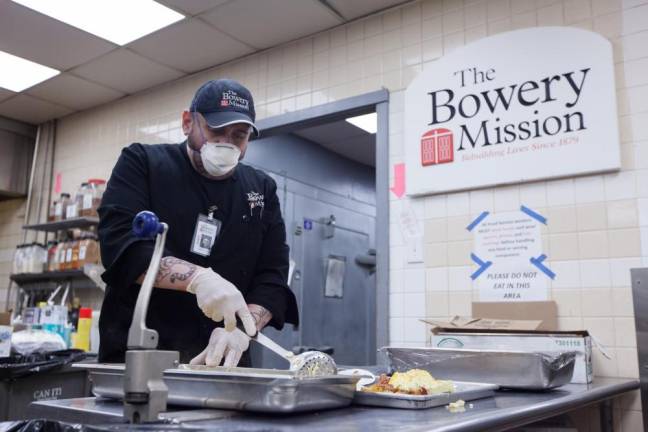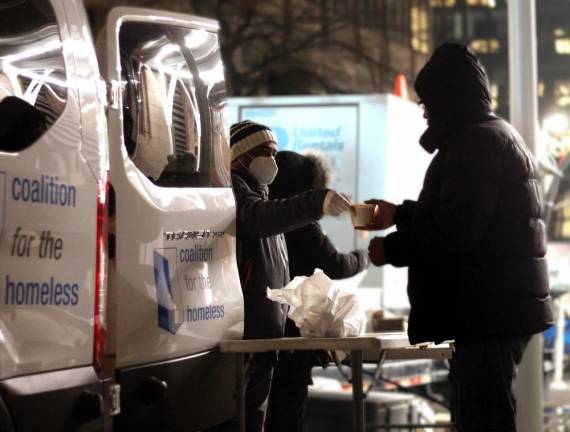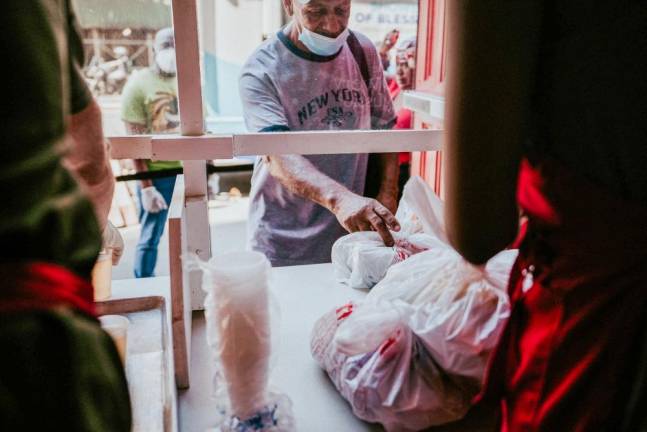In a wake of economic decline which has left people homeless for the first time, or again, and as the pandemic has battered a tired homeless service system, many are still out in the cold this season. All while the agencies in the middle scramble to be a voice for those who have no home to shelter in place at.
“For people without a home, COVID is a crisis on top of an existing crisis,” said James Winans, president and CEO of the Bowery Mission. “The pandemic has compounded problems that existed before ... Home is the central centerpiece of our strategy for COVID, and so when you don’t have a home it’s a very confusing time.”
Thanks to the city’s legal right to shelter, which makes it obligated to provide shelter to anyone who seeks it, the majority of the city’s homeless population — over 60,000 people — are currently being sheltered in some form. But even this, as Jacquelyn Simone, a policy analyst at the Coalition for the Homeless, believes is imperfect.
“The downside of our current shelter system — particularly for single adults — is that most of the shelters are in congregate, dorm-style settings,” said Simone. “So, it could be a dozen people who are unrelated sleeping in a dorm and sharing bathrooms and eating facilities in addition to sleeping facilities.”
Currently, the lion’s share of the sheltered homeless population is in hotels throughout the city, but even then, many of those individuals are in double-occupancy hotel rooms where there is still a risk of transmitting the virus among roommates.
For the minority of the sheltered population that is still in shelters and the unsheltered homeless that have sought help from a shelter, this time during the shutdown has been critical as ever. “Many organizations decided at the beginning of this pandemic not to accept new people into residential programs,” said Winans. “If you were in the house you got to stay, and if you were not in the house you weren’t coming in. The Bowery Mission said, ‘how can we continue to bring people in because leaving folks homeless on the street is not an option.’”
Changing Policies
Since the pandemic began, the Bowery Mission, which cares for 250 residents at a time, has seen 160 people come off the street by keeping its doors open and changing its policies to accommodate for social distancing and stricter cleaning. “We are very thankful we have seen very few cases of COVID and really no community spread and so we’ve been able to keep our guests safe, but also to continue to work with them to make progress towards their goals,” said Winans.
But then what about the unsheltered homeless? These people are arguably most at risk and they don’t qualify for Phase 1b vaccination status like their counterparts in congregate shelters do — because they don’t have access to the necessities, such as food and bathrooms, that qualify them. “The situation on the streets has also been very difficult in the past few months because some people have become newly homeless during the pandemic ... Despite our protections on evictions, some people have still fallen through the cracks,” said Simone.
“There were also people who did not feel safe in the shelter system and have left the shelters and have been staying on the streets.” Simone added. “And there were people who were on the streets to begin with when the crisis began, often people who felt that the system did not meet their needs in the first place.” For the people on the streets, many do not have secure access to food, a place to bathe, or personal protective equipment. A warm place might even be uncertain as myriad public locations have closed off due to the pandemic, like the subway which has been closing overnight since last May.
HOPE Survey
The Bowery Mission, Winans said, has set up public toilets along Bowery and has partnered with Showers of Blessings to provide a mobile shower to those in need. “Our concern now more than ever is that the men and women we serve have fewer places to go for warmth and relief and to be safe during the day,” said Winans. “There’s fewer options. There’s a greater risk of exposure to illness and to these temperatures, so it’s a real challenge.”
If the unsheltered homeless can find a spot to hide in the cold, it may be out of plain sight. But that is problematic considering the Department of Homeless Services just finished conducting its surveys for the Homeless Outreach Population Estimate, or HOPE, for 2021, which is a point-and-place estimate of the city’s unsheltered homeless population from a single night.
“We have also raised the same issues with the methodology year after year,” said Simone. “Namely, if someone is sleeping in a bank vestibule, for example, which is a place that people might take shelter when it’s very cold out, that person is not counted under the HOPE Count because that’s private property. Or, if someone is sleeping in a place that may not be immediately visible to the people that are counting — which is a survival skill for folks who are unsheltered going somewhere where they are out of public view — that person would be omitted from the count.”
HOPE is required of the Department of Homeless Services by the U.S. Department of Housing and Urban Development (HUD) for funding, although HUD made it optional this year due to the pandemic.
The Department of Homeless Services did not respond to requests to be interviewed and the Mayor’s Office could not be reached for comment.
Simone fears especially for this year’s count since she said there will be no shadow count of decoy homeless people to check the accuracy of the count and she believes it shouldn’t be something to base policy on. “Always take it with a grain of salt, but I think particularly this year because it’s going to be different from past years, it’s not going to be comparable,” she said.
Despite the results of the final HOPE numbers which will be out by next summer, Simone is poised to see actionable change. “We entered this crisis with a homeless services system that was already bursting at the seams and people who were experiencing homelessness were at infinitely higher risk of contracting and potentially dying from this virus,” she said. “So, what we need to do going forward is we need to make sure we don’t have record homelessness in New York City moving forward, period.”
“The situation on the streets has also been very difficult in the past few months because some people have become newly homeless during the pandemic.” Jacquelyn Simone, Coalition for the Homeless


